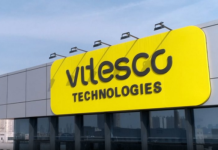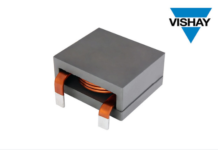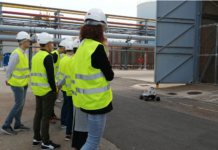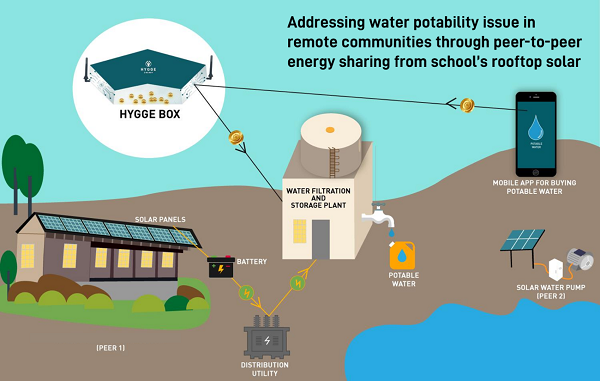
EV Charging Solution | Hygge Energy Founder and CEO Prateek Saxena talked with our Editor Pratibha Rawat about the revolutionary business model of energy trading and EV charging marketplace. He shares insights on zero‑emission mobility, renewable energy for EV charging solution, their various national and international projects and the innovative Hygge Box.
Hygge Energy is creating a renewable energy trading and EV charging marketplace. Can you elaborate on renewable energy trading and is Hygge Energy providing an ecosystem for EV charging solution?
Zero Emission Electric Mobility, Hygge’s renewables-based EV charging platform, seeks to redefine the EV charging business and transform it into one that is profitable, renewables-dominant and clearly linked to offsetting the local carbon footprint.
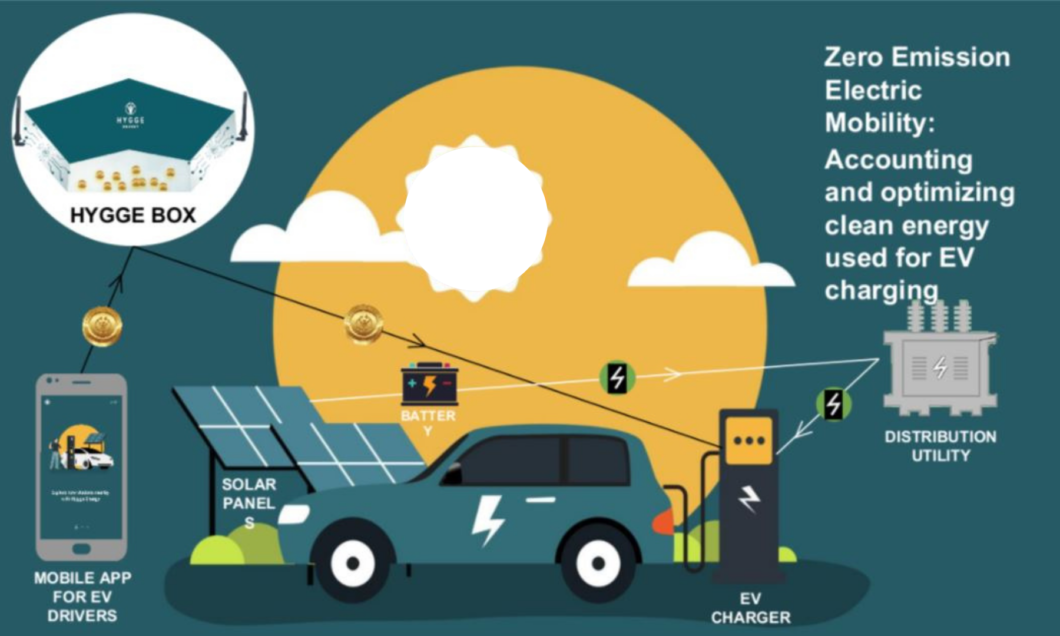
In a peer-to-peer renewable energy trading model, a distributed renewable energy asset ,owner such as a homeowner with rooftop solar or a commercial complex with a larger installation is able to sell or share the energy they produce on site with their community and neighbours ( i.e., “”peers”)”) within the same electrical premises (i.e., within the boundary of the distribution utility) using the distribution utility’s pre-existing infrastructure. This is facilitated by the Hygge Platform.
In Zero Emission Electric Mobility, we are applying the same concept to EV charging solution: if an EV charging operator has, for example, a rooftop solar installation, then the energy produced by this system can be sent to the EV chargers (i.e., “peers”) “) under the operator’s purview. Hygge’s system includes a software-based service along with the Hygge Box and EV charging app to facilitate a high-quality end-to-end EV charging experience for the operator as well as the EV driver.
2. How Hygge is contributing toward zero-emission mobility?
Hygge’s solution optimizes the use of renewable energy for EV charging solution, thereby reducing the pressure on the local grid and drastically cutting down the payback period for rooftop solar. This encourages the adoption of rooftop solar. A solution like ours is essential to meeting the country’s renewable energy goals: India is projected to fall short of its installed solar capacity target of 100 GW by ~27% due to the slow uptake in rooftop solar. India set a target of 40 GW from rooftop solar by December 2022, but is projected to fall short of that target by 25 GW.
This shortfall is a major concern. Hygge‘s solution ensures that rooftop solar owners earn payback on their installations at a much faster rate, making it an attractive and profitable investment. This solution is not only renewables-based but also avoids investment in transmission and distribution system, while creating resiliency locally. This is the area where Hygge has created a solution to support growth in this market.
As per the data we have collected in our pilot project with IndianOil, the payback period for rooftop solar as well as the electricity bills of EV charging stations are slashed by 80%. Furthermore, our projections show us that there will be a reduction of 54.22 metric tonnes or over 99% of CO2 emissions at the IndianOil retail outlet in Bengaluru in 2023 due to adoption of the Hygge Platform..
3. Kindly introduce our readers to Hygge Box and its Significance.
The Hygge Box is our proprietary customer-premises device that facilitates the entire process of EV charging. Its embedded software enables tracking, measurement , optimization, allocation and accounting of clean energy for EV charging. It standardizes the user experience and makes it independent of the specific features of each EV charger model. It also ensures that transaction security, booking guarantees and authentication are managed at the high level of quality that Hygge provides. It also communicates before and after the transactions to the booking and billing systems, and handles many practical scenarios without the need for connectivity.

4. How blockchain will lead to clean energy?
The Hygge Box is embedded with patented technology comprising machine learning-based AI, IoT and blockchain. It harmonizes both behind- and -in-front-of-the-meter distributed renewable energy resources. In rapid intervals, it trades local energy generation (like rooftop solar) against instantaneous consumption, ,autonomously or on command, while, compensating the DISCOM for the use of its distribution network. In doing so, it creates millions of auditable renewable energy trails from source to end-use.
This provides a unique ability to direct the use of renewable energy to specific carbon displacing applications, specifically , specifically EV charging in zero Emission Electric Mobility, which, in turn maximizes carbon credits.
We are enabling renewable energy and carbon trading through national trading partners, and intend to use it to establish India as a carbon credit export economy.
5. The world is moving towards carbon neutrality, what are the major roadblocks you see in its achievements?
Renewable energy is key to decarbonization and local energy resilience. Yet, PV energy contribution in leading adopter communities, peaks at around 15%. All around, programs like net-metering are being pulled back and storage is not being deployed or financed at meaningful rates.
Typically , blame is laid on aspects like variability or intermittency of renewables, along with grid stability and technical concerns. Hygge’s founders have decades of experience, on the one hand, in Electric utility management, having rolled out demand response, distributed energy initiatives, and other programs, and, ,on the other, developing renewables technologies, grid connected distributed energy resource systems and large renewable-based microgrids in North America, India, Africa and the Pacific Islands.
In our experience, what is really broken are the business models for the committed adoption of distributed renewable energy resource technologies.
Traditional models are based on a one-to-one relationship between consumer and utility and rely on unsustainable arrangements like net-metering that adversely impact the utility while causing inequitable fixed rate charges for non-solar customers. Utilities are yet to find a clear business case for rolling out energy storage. Community policy making stands on the sidelines, unable to influence the growth of local renewable energy and without the tools to direct its use towards local decarbonization.
The policies and regulations are more or less already in place in India, and so is the infrastructure. It is now a matter of using technology to create a business model that is a win-win for everyone.
6. What are your ongoing and future projects for the Indian market?
We have several projects in various stages in USA, Canada, UK and India. In India, as described before as well, we are mainly targeting Zero Emission Electric Mobility, which is the EV charging use case for our technology. We have thus far set up our Zero Emission Electric Mobility solution for IndianOil and are in the process of setting it up for THINK Gas. Our project with IndianOil is ready and in preparation for scaling. The one with THINK Gas is nearing completion, and we will proceed to the next stage for scaling.
We are also carrying out energy accessibility projects in India. One such project
Project we are working on is based in Sohrarim village in the East Khasi Hills, Meghalaya. This project is in collaboration with UC Berkeley’s Smart Village Movement (SVM) and the Government of Meghalaya , and is being driven by the vision of Chief Minister Conrad Sangma. We are working towards creating a self-sustaining remote community empowered by Hygge Energy’s platform. Through this partnership and our renewable models , we want to bring not only clean , sustainable and affordable electricity to the villages and remote communities of Meghalaya, but also focus in improving the quality of life in these areas by offering Hygge Energy’s platform for peer-to-peer trading of surplus clean energy harvested.
In addition to promoting clean energy as the preferred choice for communities while enabling these schools to earn financial returns, we endeavour to create a social impact as well. We . We have also received interest from other state governments to use a similar business model to develop a water potability solution by providing harvested and optimized surplus electricity enabled by the Hygge Platform.
Other than these, we, We have also successfully completed a peer-to-peer renewable energy trading project in GNDEC, Ludhiana.
7. What is your vision for Hygge in the Coming 5 years?
We are a B2B company that is focused on India as a potentially high-growth market. Our solution enables small entrepreneurs and corporates to hit the ground running with our next-gen EV charging solution that requires minimal investment and yields high profitability. We are already in discussion with multiple fuel station retail companies to support their EV charging initiatives , and also to help them create carbon offset at the corporate level. The same holds true for large campuses and national level companies.

We are appointing franchises in each district to take our solution to both rural and urban areas, including housing societies, the hospitality industry, malls, and public parking places. We see this as an opportunity of Rs. 150 crores for Hygge in the next 5 years.
Other than this, we are also partnering and collaborating with battery OEMs and EV manufacturers to create an integrated and seamless experience for our customers and EV drivers.



